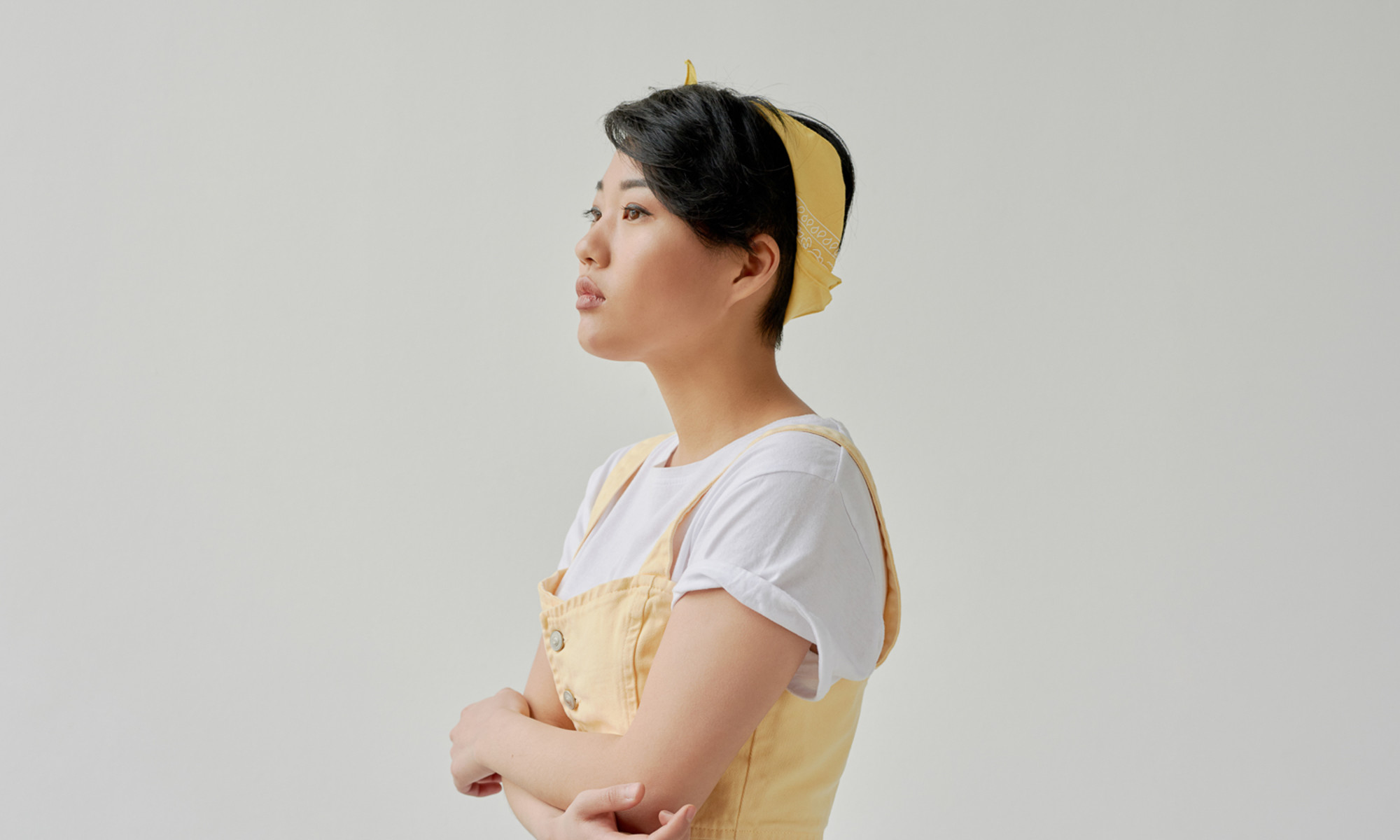Warrior II Pose (Virabhadrasana II): How to Do, Benefits, and Modifications
Sanskrit Pronunciation Virabhadrasana(veer-ah-bah-DRAHS-anna) (Veer-aa-ba-DRA-SUN-aa) Meaning Vira = hero/warrior Bhadra = good/friend Asana = pose Pose Type Standing Pose Level 1 (Beginner) Stretches Shoulders, Femur, Groin, Calves, Ankles, Chest, Thorax Category Extension, Strengthening, Hip Opener, Balance Warrior II Pose Information...
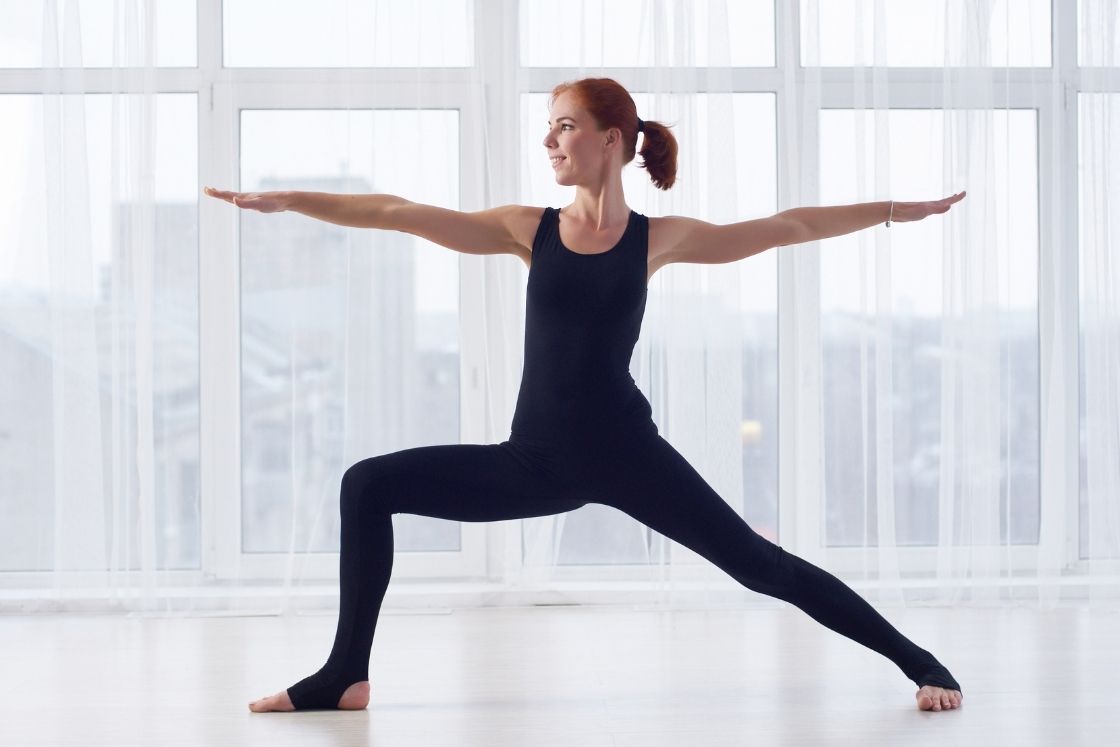
Warrior II Pose (Virabhadrasana II): How to Do, Benefits, and Modifications
 Image Source: canva
Image Source: canva| Sanskrit Pronunciation | Virabhadrasana (veer-ah-bah-DRAHS-anna) (Veer-aa-ba-DRA-SUN-aa) |
| Meaning | Vira = hero/warrior Bhadra = good/friend Asana = pose |
| Pose Type | Standing |
| Pose Level | 1 (Beginner) |
| Stretches | Shoulders, Femur, Groin, Calves, Ankles, Chest, Thorax |
| Category | Extension, Strengthening, Hip Opener, Balance |
Warrior II Pose, or Virabhadrasana II, is a strong standing yoga pose where you spread your legs wide and stretch your arms out to the sides. Named after the warrior Virabhadra (Shiva), this pose represents strength, focus, and courage. It helps build muscle and flexibility while improving balance and body awareness.
In Warrior II, you position your feet, bend one knee, and extend your arms to create a stable and powerful stance. This pose works several muscles and helps you stay focused and centered. Whether you’re new to yoga or have been practicing for a while, Warrior II is a great pose for building strength and confidence.
Meaning & Interpretation
Virabhadrasana is a combination of three root terms: Vira+Bhadra+Asana. Here, ‘Vira’ refers to a ‘warrior’ or ‘hero,’ ‘Bhadra’ means ‘friend,’ and ‘Asana’ is ‘pose.’
The three Virabhadrasana poses are named after Virabhadra, the great warrior believed to have emerged from one of the dreadlocks of Lord Shiva. All three poses in the Virabhadrasana series represent different postures of Virabhadra taken to confront King Daksha.
In the epic Sanskrit poem Kumarasambhavam by Kalidasa, the mythological aspects of Virabhadrasana are described, detailing the tale of Virabhadra. According to legend, Shiva created Virabhadra to avenge Daksha for Sati’s death. The Warrior II pose depicts the moment when Virabhadra fixes his gaze on Daksha to launch his attack.
Mirroring Virabhadra’s stance and focus, Warrior II requires holding and maintaining a steady posture while concentrating.
Warrior pose II (virabhadrasana II) practice guide
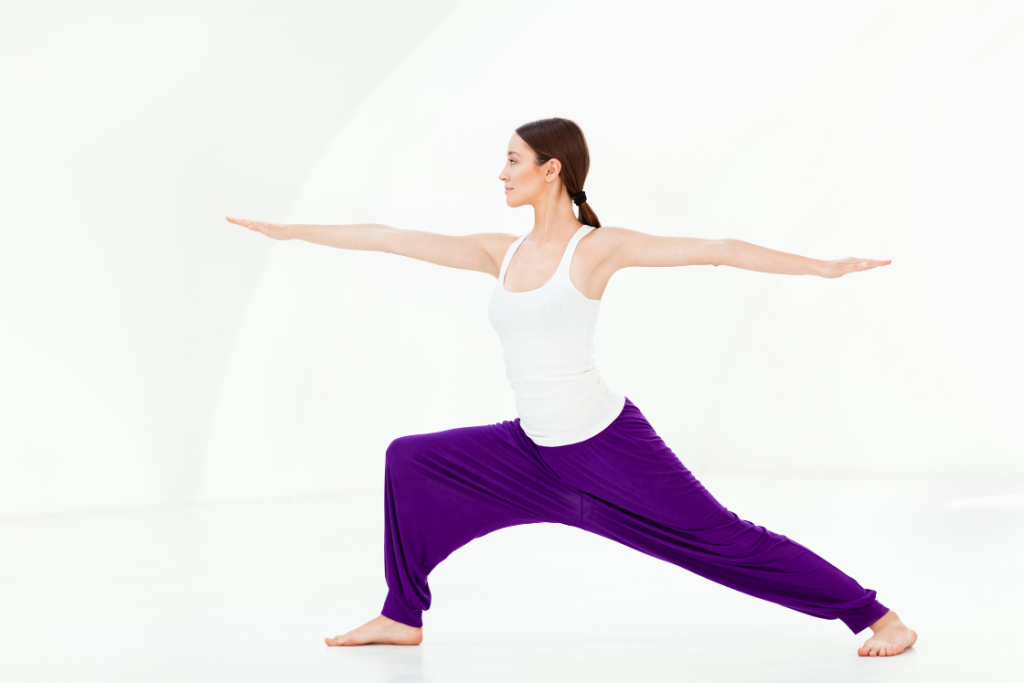 Image Source: shutterstock
Image Source: shutterstockHow to do warrior II pose (steps)
Start in Mountain Pose with feet together. Exhale and spread your legs 3-4 feet apart. Place your hands on your waist. Turn your right foot out to 90° and your left foot in by 15°. Turn your head to the right and gaze in that direction. Inhale and extend your arms to the sides, palms down, at shoulder height. Exhale and bend your right knee, keeping it over your ankle and not past it. Tuck your pelvis in and keep your spine straight. Hold the position for 30-60 seconds, breathing deeply. Exhale and straighten your right knee.Repeat the same steps on the other side focusing on your left foot.
Tips for beginners
Focus on your left knee when performing the pose. Bend the left knee smoothly while exhaling deeply. Ensure your knee doesn’t bend toward the big toe. Instead, tilt it slightly toward the little toe to maintain proper alignment. Draw your tailbone downward to strengthen and straighten your spine. Start with a smaller distance between your feet and keep the front knee bent. This provides better stability and requires less strength. To reduce pressure on the knee, try bending the back knee slightly as well.Preparatory poses
Bound Angle Pose (Baddha Konasana) Tadasana (Mountain Pose) Tree Pose (Vrikshasana) Wide-legged two-fold Lunge with chair Warrior Pose I (Virabhadrasana I) Triangle pose (Trikonasana) with support.Follow up poses
Extended side angle (Utthita parsvakonasana) Reverse warrior (Viparita virabhadrasana) Crane pose (Bakasana)Warrior II modifications
 Image Source: Canva
Image Source: CanvaUsing common yoga props can enhance Warrior II Pose with these modifications:
Using a Block: Place a block or two under your front foot to provide additional support. This helps prevent the back foot from collapsing and maintains its alignment. Using a Folding Chair: If bending the knee properly is challenging, use a folding chair under your front thigh to support your torso. Against a Wall: For better balance and control, place the heel of your back foot near a wall while performing the pose. This offers extra support and stability. Using a Fabric Strap: Tie a fabric into a hammock and perform Warrior II aerially. Instead of bending the right knee traditionally, lift the leg over the strap and lunge forward. This requires less strength and provides additional support. Holding the Fabric by Hands: Tie a piece of fabric in front and back, then hold it while raising your hands and maintaining the stretch. This may be challenging initially but helps improve the stretching of the groin and hip region.Warrior 2 pose variations
Warrior pose 2 with one knee on the floor – It could be performed by not shifting the direction of the neck while raising the arms.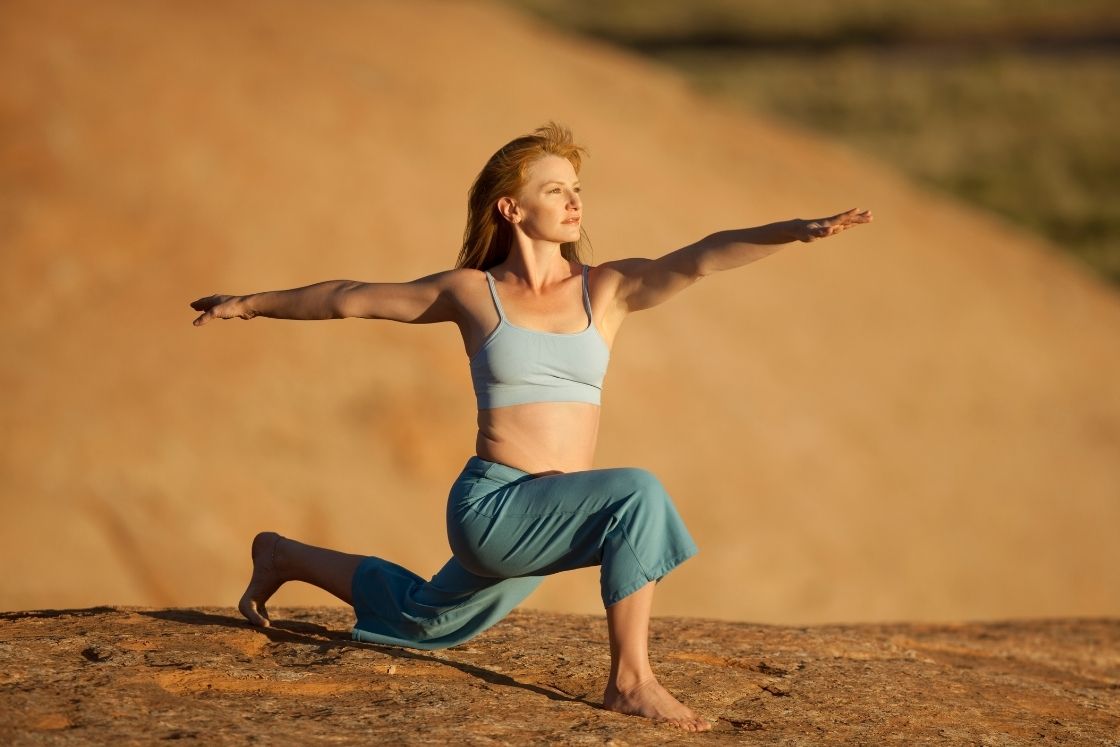 Image source: canvaPerform the warrior pose II along with a partner on the back.
Image source: canvaPerform the warrior pose II along with a partner on the back.
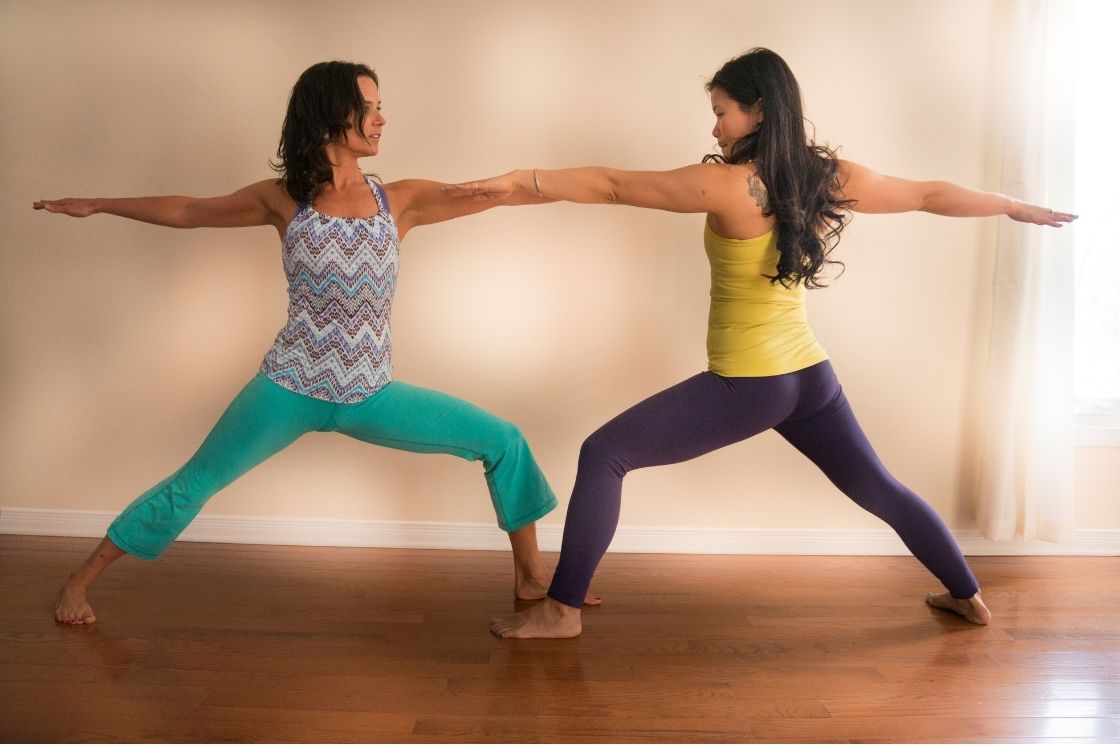 Image Source: canva
Image Source: canvaPrecautions
Keep your front knee directly above your ankle. Align the heel of your front foot with the arch of your back foot. Ensure your hips are squared and not tilted forward or back. Engage your core and slightly tuck your tailbone to avoid lower back strain. Relax your shoulders and keep them aligned over your hips. Shorten your stance or use a wall for support if you feel unstable. Modify the pose or consult a healthcare professional if you have knee, hip, or lower back issues.Contraindications
Avoid the pose if you have severe knee pain, as it can exacerbate discomfort or injury. Those with high blood pressure should be cautious, as holding the pose may increase blood pressure levels. Practice caution with the pose if experiencing diarrhea, as it may not be comfortable or advisable during digestive distress. Individuals with chronic neck or shoulder injuries should avoid or modify the pose to prevent aggravation. Practice caution with the pose if experiencing diarrhea, as it may not be comfortable or advisable during digestive distress. While generally safe for most, consult with a healthcare provider before practicing Warrior II during pregnancy, especially if you have any specific concerns or conditions. Avoid the pose if you’ve recently had surgery or have any post-operative restrictions.Benefits Warrior 2 Pose (Virabhadrasana 2 )
Enhances stability: Virabhadrasana II focuses on muscle alignment, which is crucial for core stability. Practicing this pose improves core strength and body control, making it an effective practice for injury prevention. It helps practitioners develop greater awareness of balance and stability throughout the body. Improves respiration: During Warrior II, deep breathing is essential for holding the pose effectively. This practice strengthens the respiratory organs, expands the chest and lungs, and helps prevent respiratory disorders. Cures infertility: Virabhadrasana II is beneficial for couples dealing with infertility as it strengthens the core, legs, and lower body. It specifically targets the sacral chakra, which is associated with the reproductive system. Helpful during pregnancy: Warrior II pose involves stretching muscles for an extended duration, increasing endurance and flexibility, and enhancing overall strength. Therefore, it can be beneficial and practiced during pregnancy. Tones abdominal organs : This asana helps revitalise and stimulate the abdominal organs. It targets the abdominal cavity internally and is beneficial for toning all the vital abdominal organs. Boosts stamina: The Warrior II pose helps the practitioner build and boost stamina. By holding the pose correctly, endurance improves, leading to increased energy and vitality. Improves concentration power: Besides offering physical benefits, Virabhadrasana II is also advantageous for mental health. Maintaining the pose requires focusing your gaze on a specific point, which enhances mental clarity, reduces distractions, and improves concentration. Therapeutic action: This pose can help remedy certain disorders and diseases. Practicing Virabhadrasana II is recommended for alleviating carpal tunnel syndrome, flat feet, osteoporosis, and sciatica.Conclusion
Achieving courage, balance, stamina, and strength is a goal for every individual. Remarkably, these qualities are already within us; it just takes awareness to bring them to the forefront.
Warrior II Pose is a powerful tool to unlock these traits. So, grab your yoga mat and begin practicing regularly. Embrace the pose with grace, use this guidance, and step forward with your full potential, like a true warrior.
Warrior II Pose FAQs
1. How long should I hold Warrior II Pose?
Hold Warrior II Pose for 30-60 seconds on each side, focusing on maintaining balance and proper alignment.
2. Is Warrior II Pose(Virabhadrasana II.) suitable for beginners?
Yes, with modifications, it can be practiced by beginners to build strength and stability.
3. Is it necessary to do Warrior II with an empty stomach?
Yes, it is important to have at least a four to six-hour gap between eating and performing Virabhadrasana II. Ensure your stomach is empty and your bowels are clear before starting the pose.
4. What is the best possible time to perform Warrior II?
The best time to perform Virabhadrasana II is in the morning, as it enhances concentration and focus. However, practicing it in the evening is also beneficial if morning practice is not feasible.
5. Can Warrior II Pose help with flexibility?
Yes, it improves flexibility in the hips, legs, and arms, and stretches the groin, hamstrings, and calves.
6. What are common mistakes to avoid in Warrior II Pose?
Avoid letting the front knee collapse inward, keep your torso aligned, and ensure your back foot is firmly grounded.
7. What should I do if I have knee pain while performing Warrior II Pose?
If you experience knee pain, reduce the depth of the knee bend, ensure proper alignment, and consider modifying the pose with support or reduced range of motion.
About The Author
Ashish
Ashish is a certified Yoga Teacher having experience of teaching at various schools in India. He started learning yoga from renowned yoga schools in the world capital of yoga, Rishikesh. Through his teaching, he realized how Yoga & Ayurveda can be used to increase the longevity and wellness of one's life.

 JimMin
JimMin 
























.jpg)

